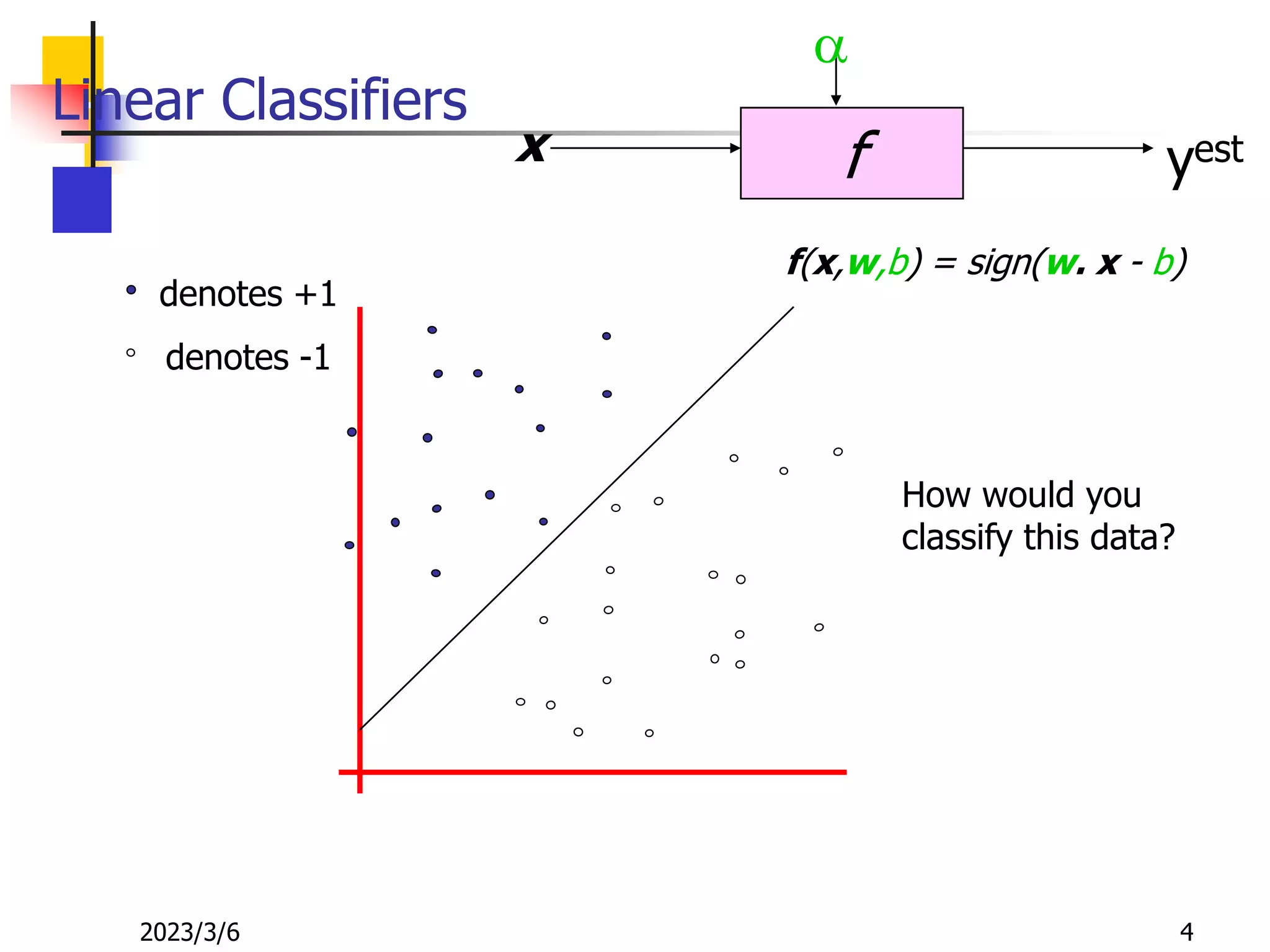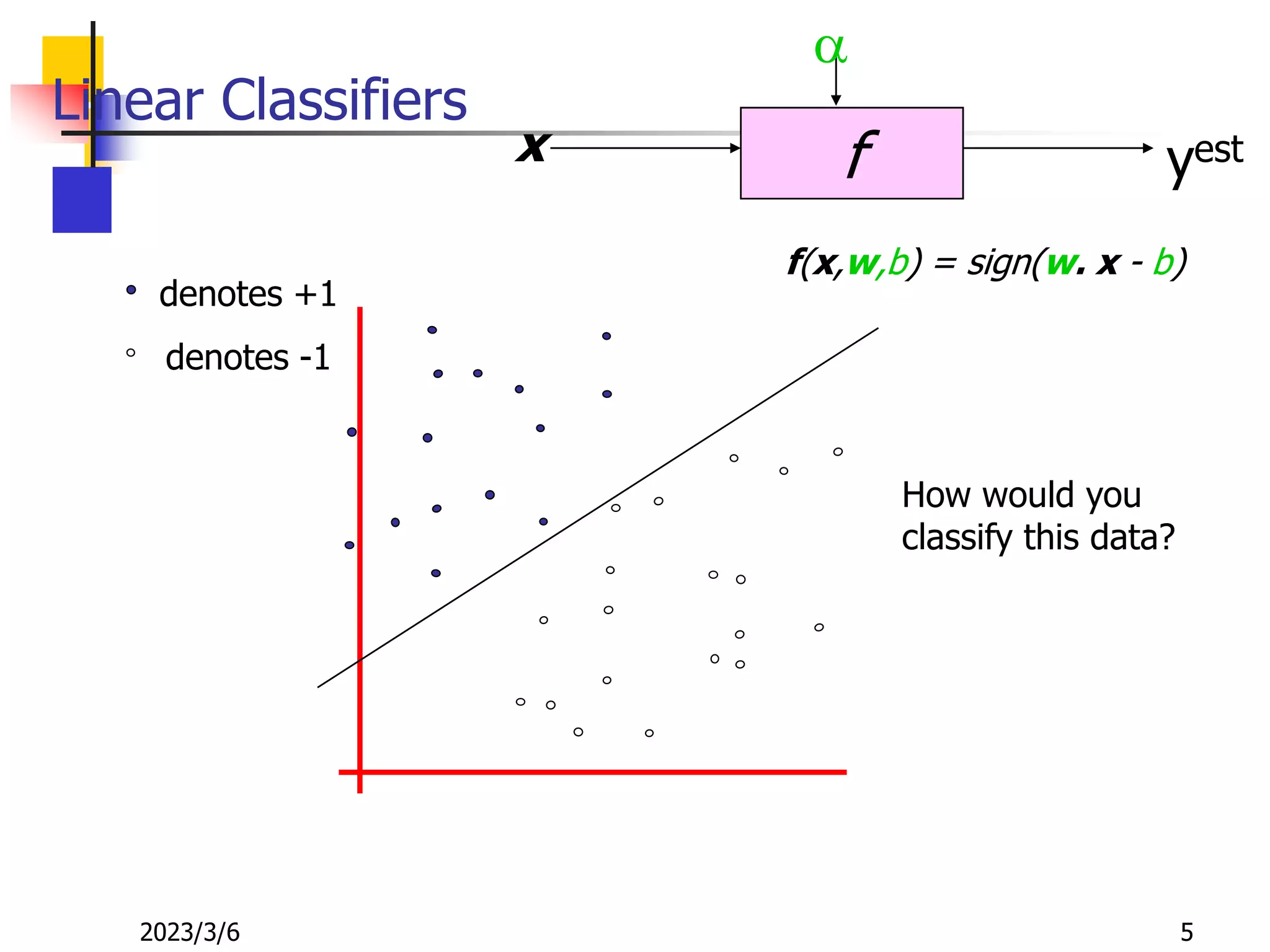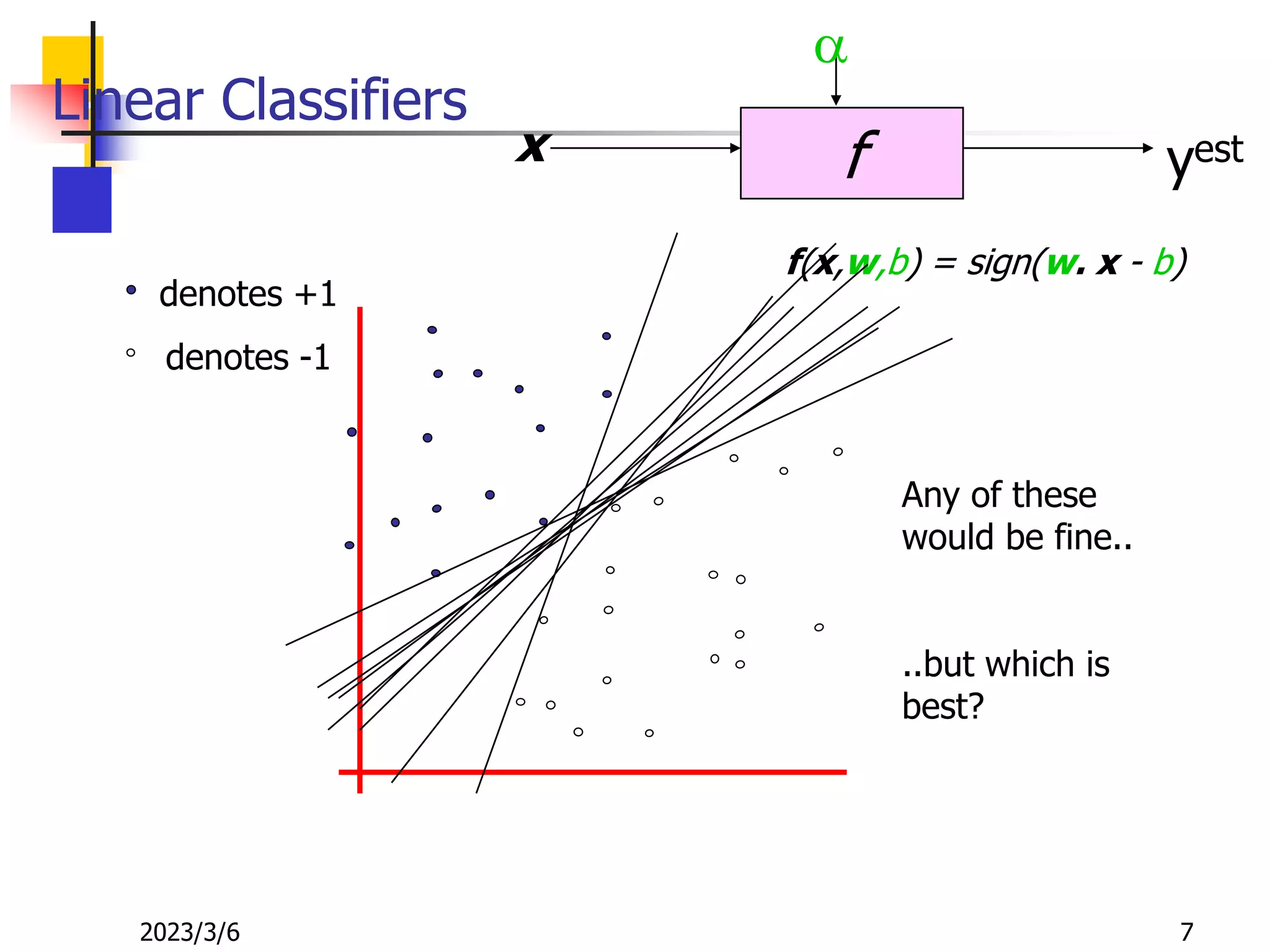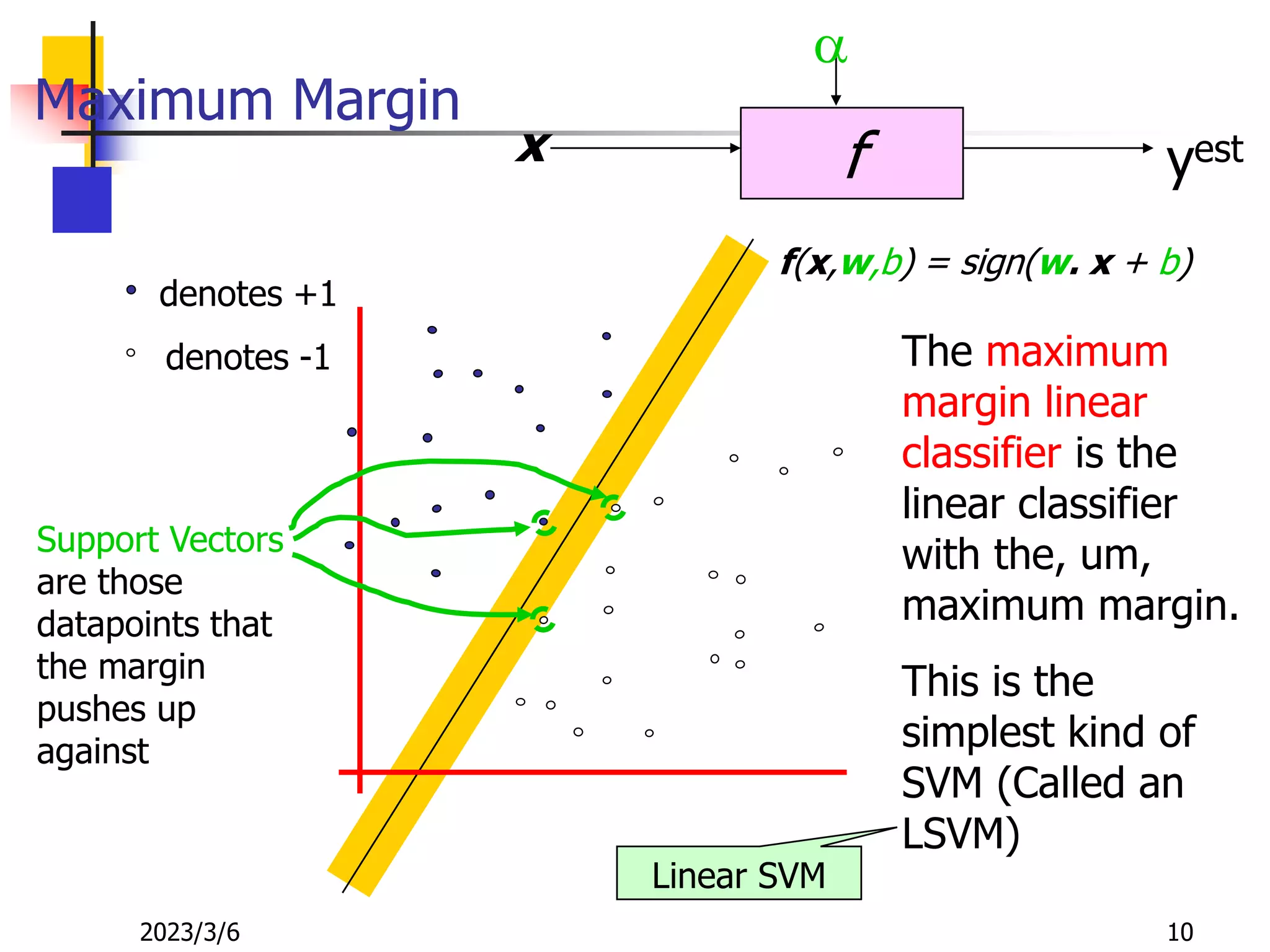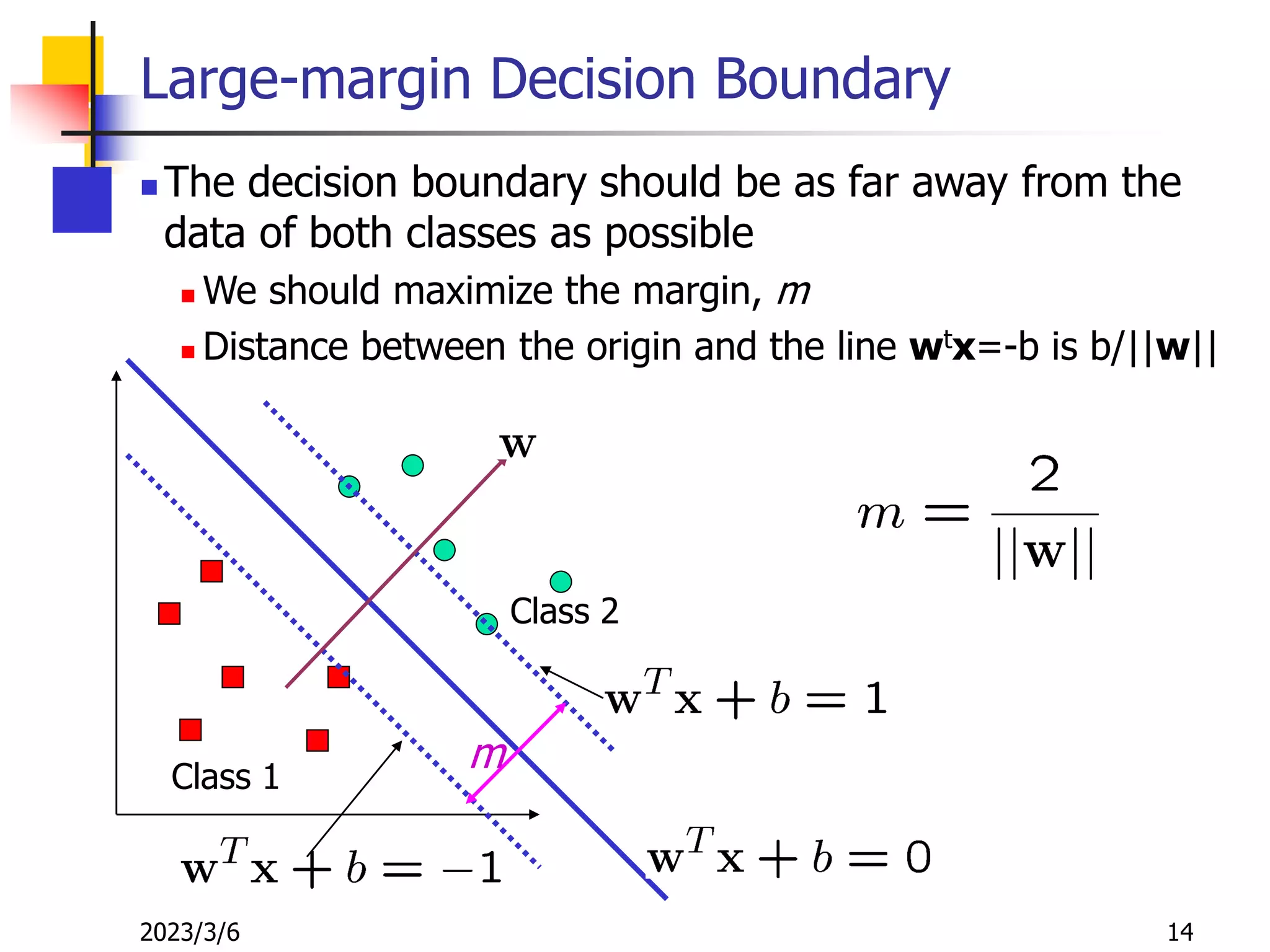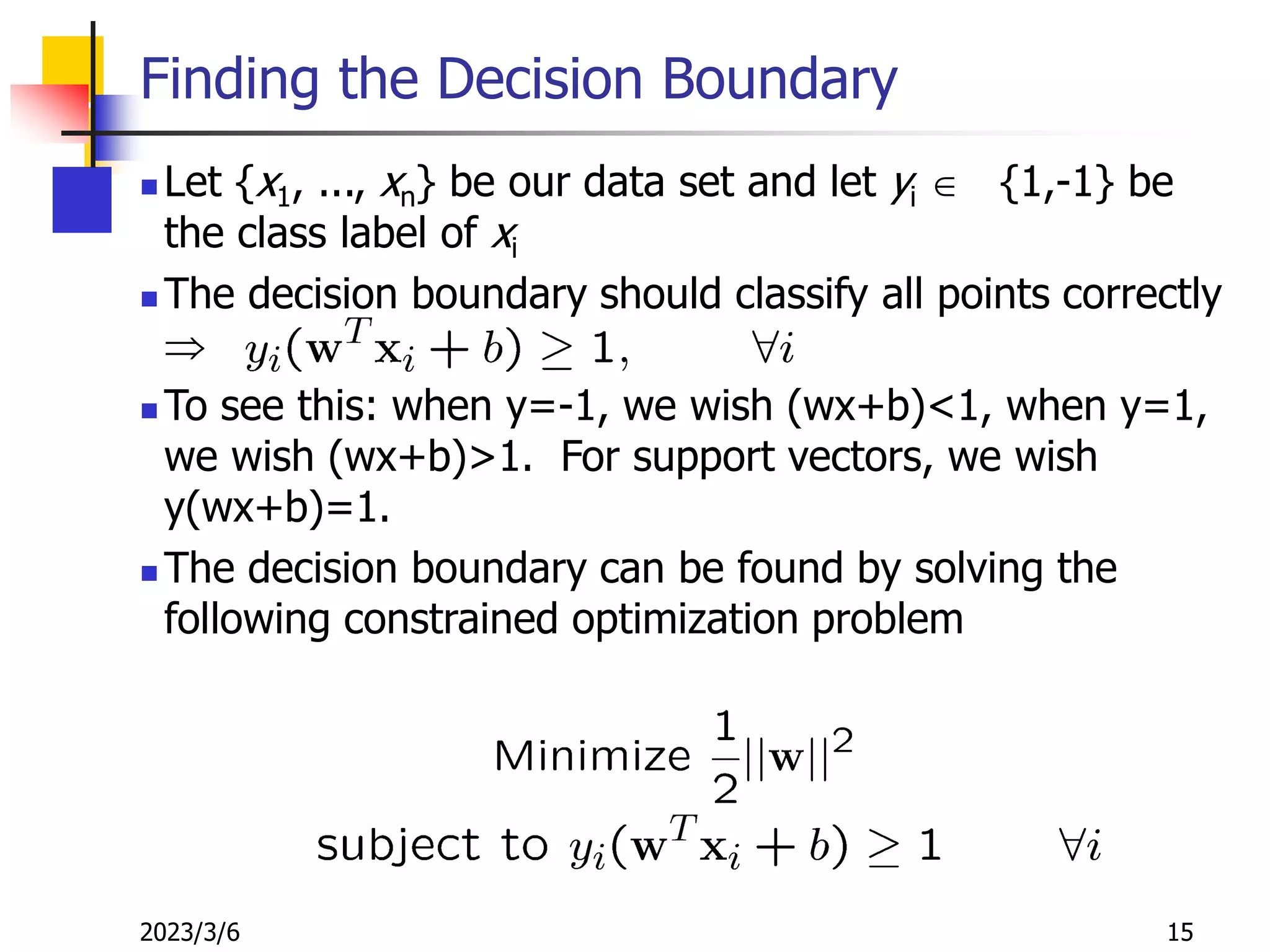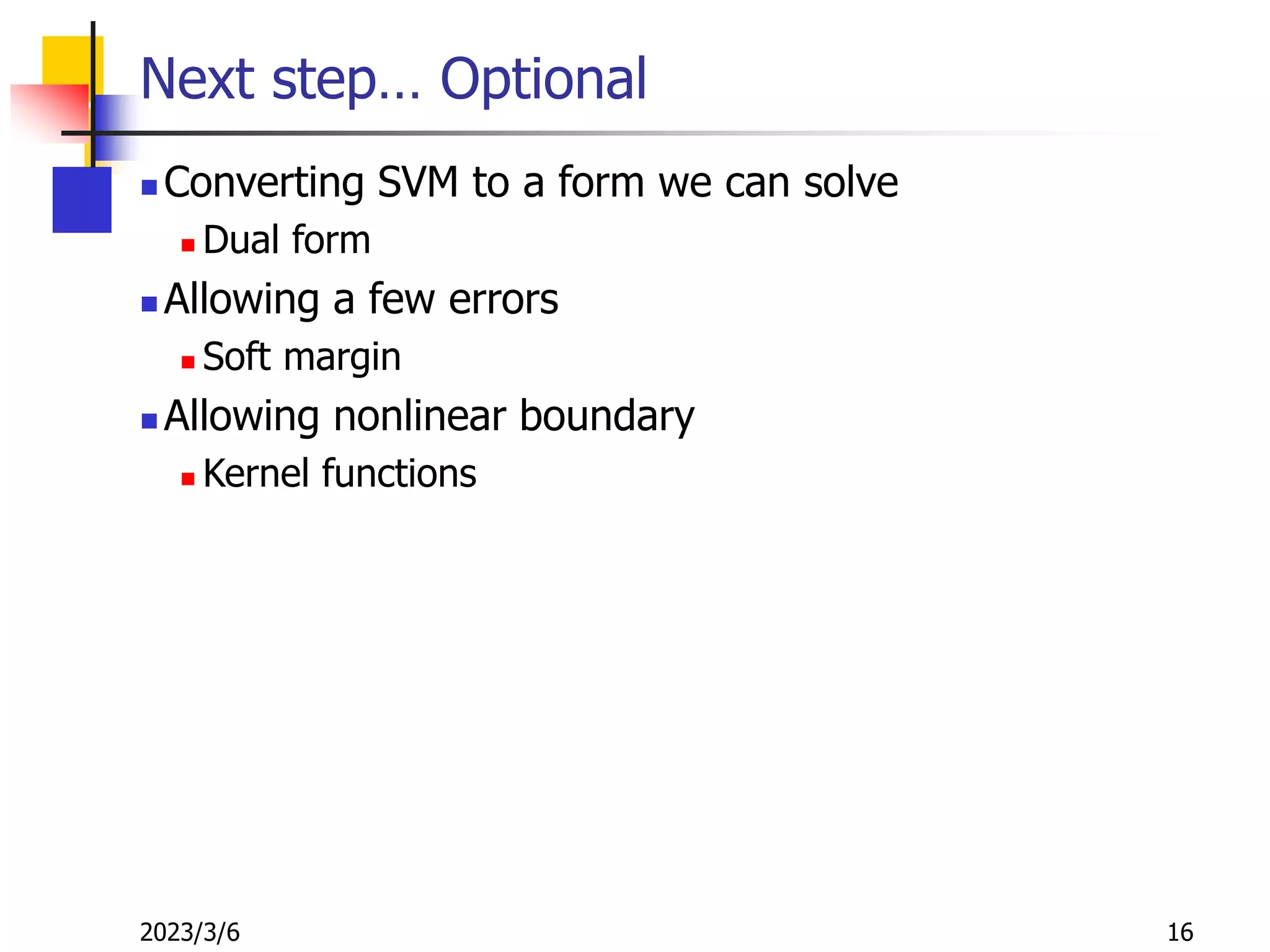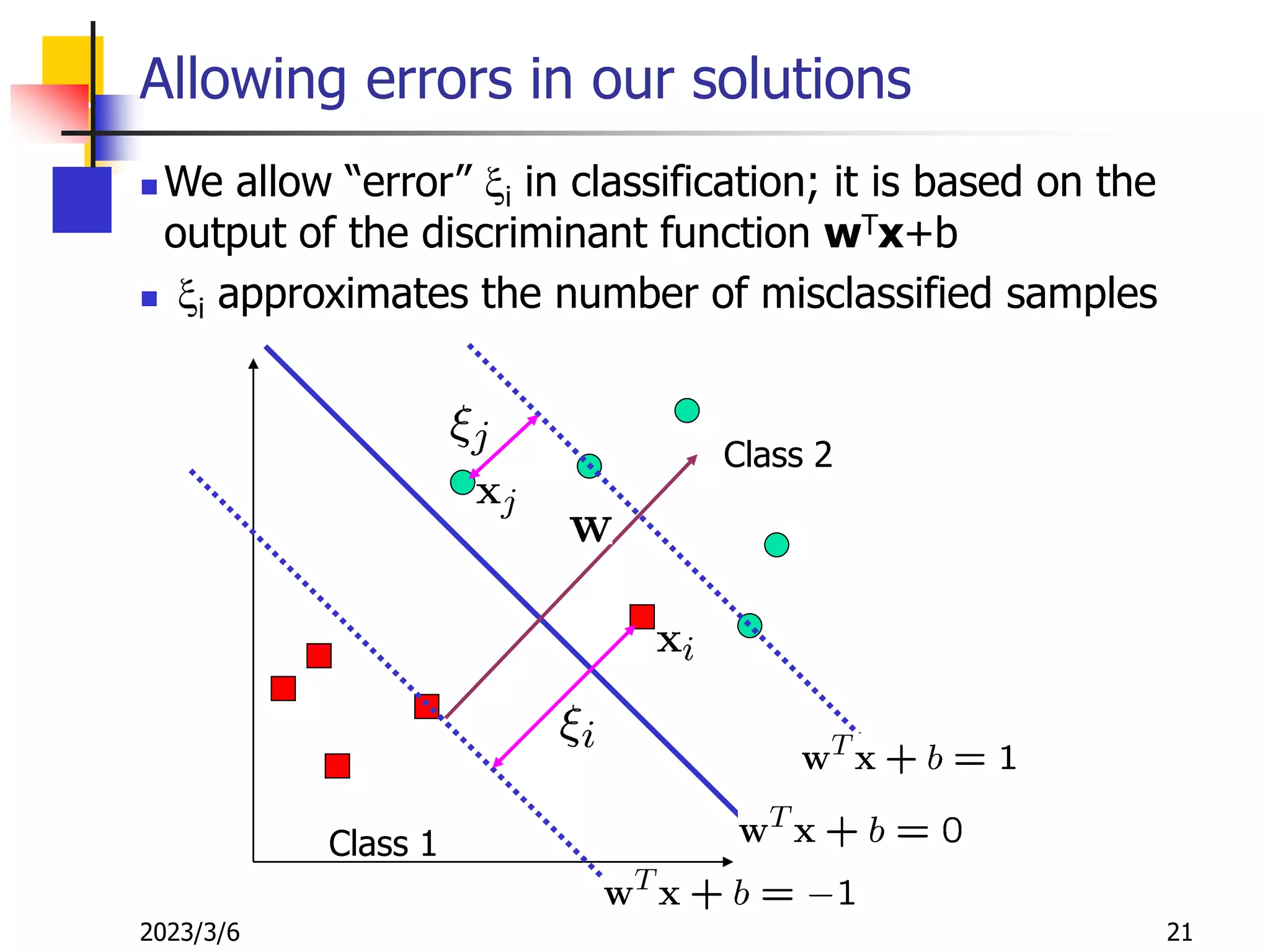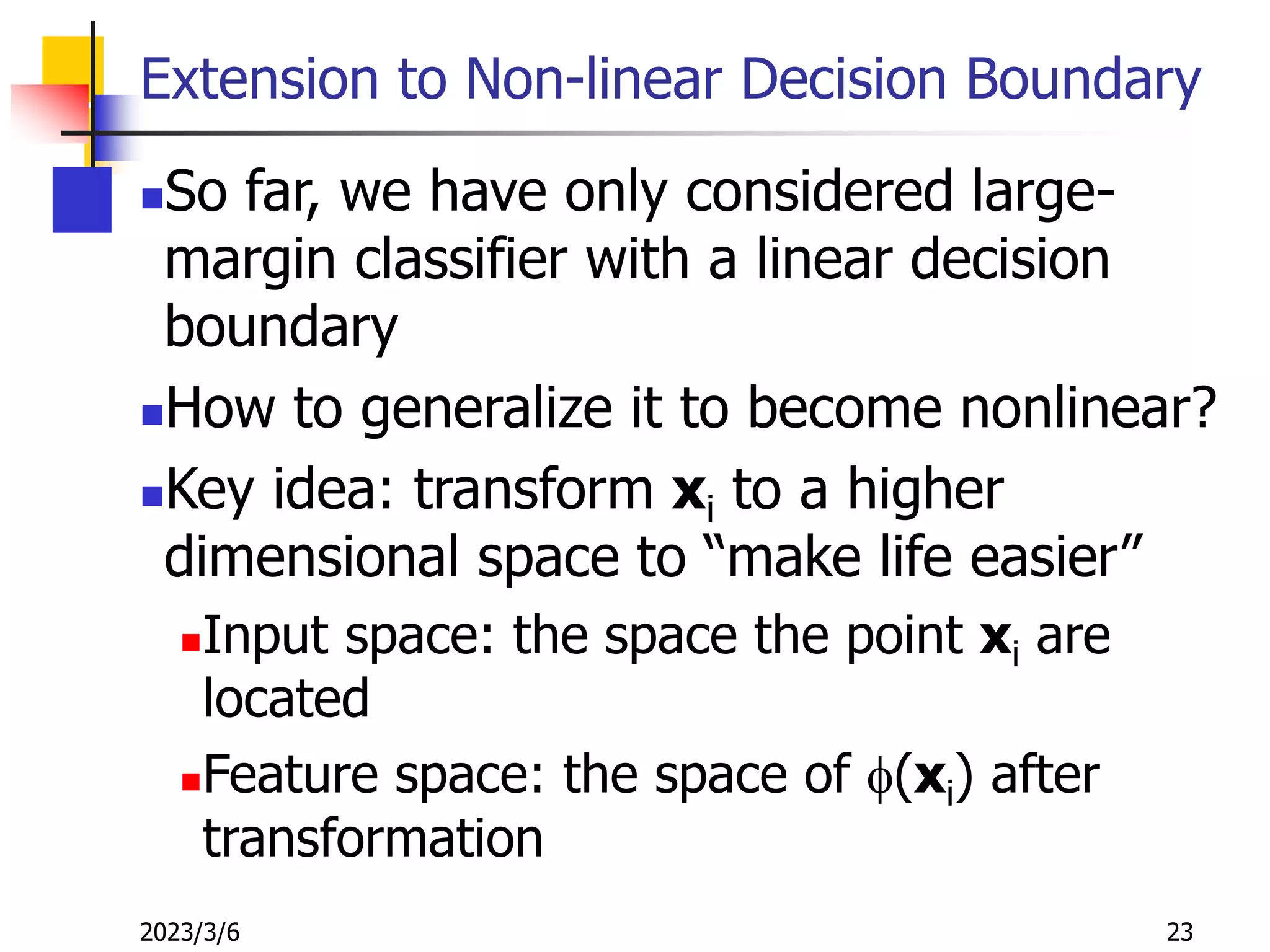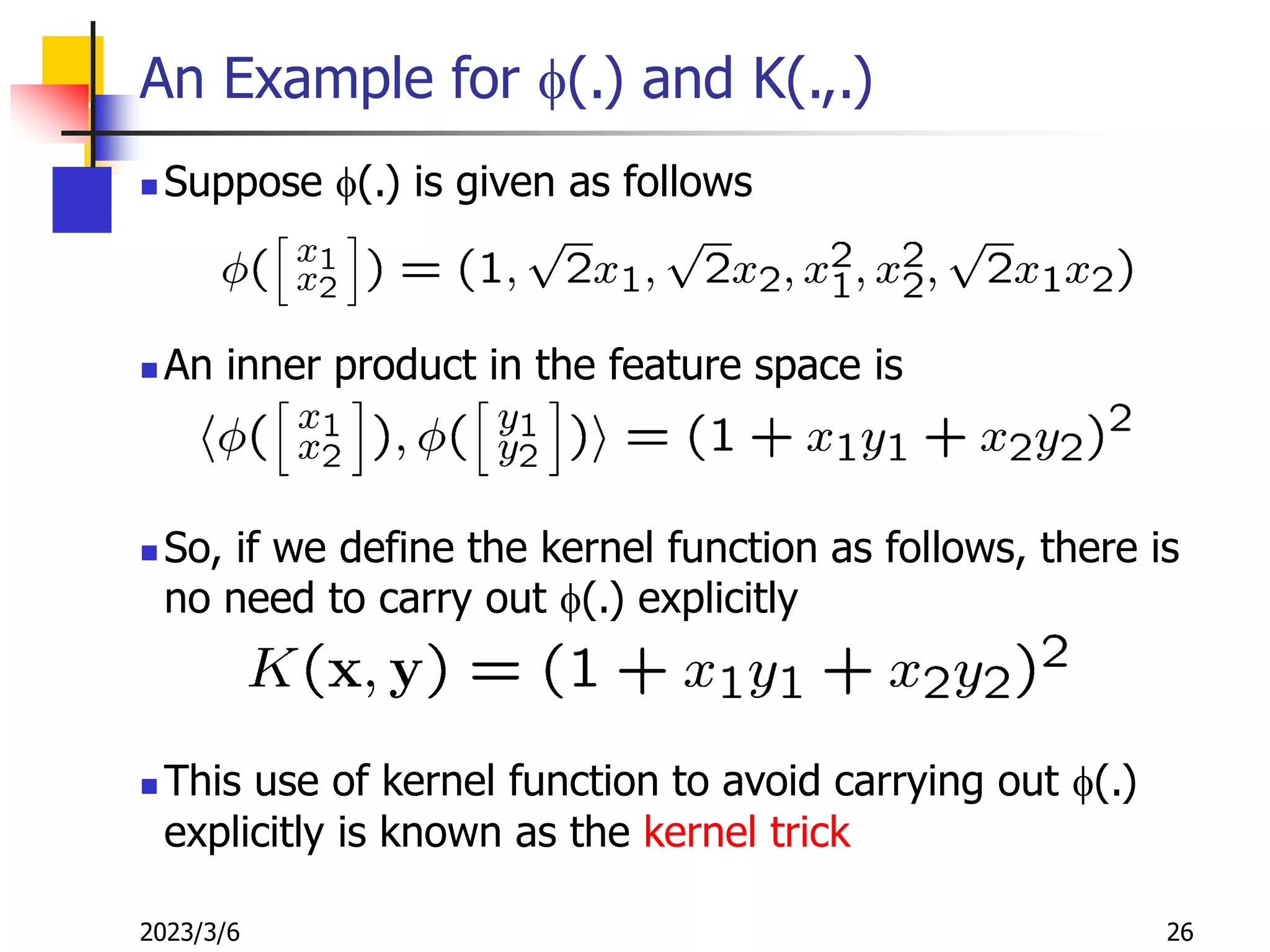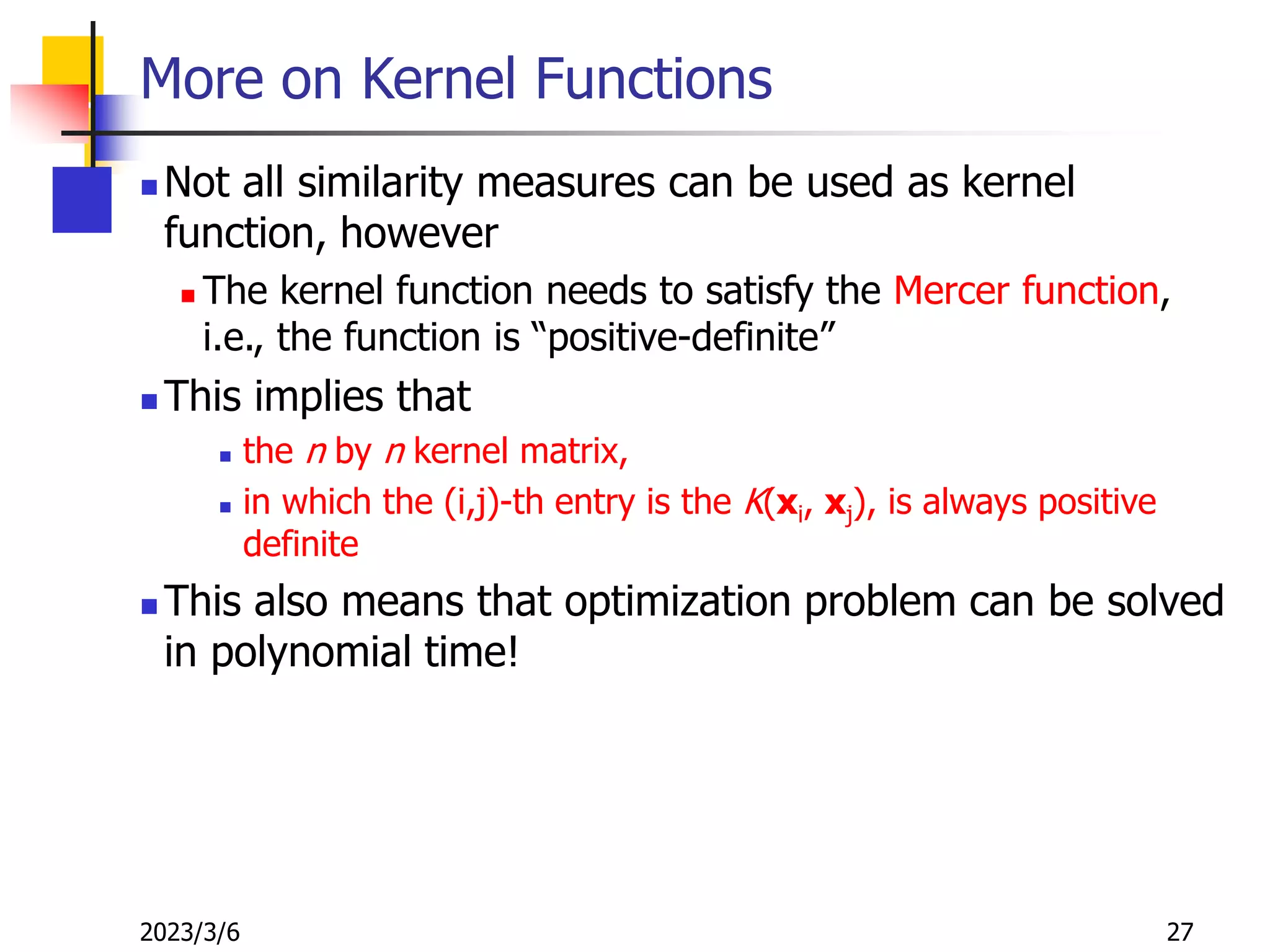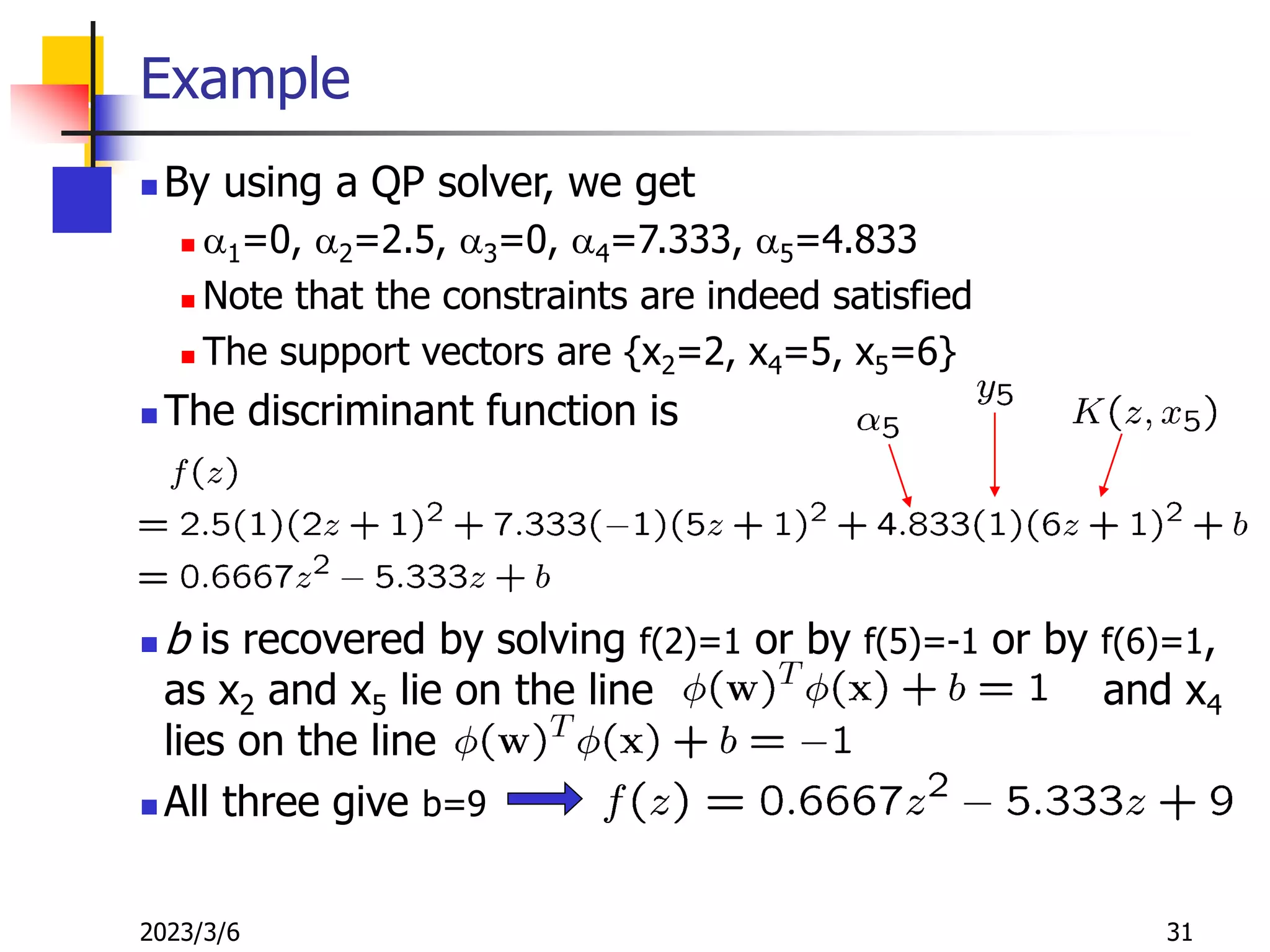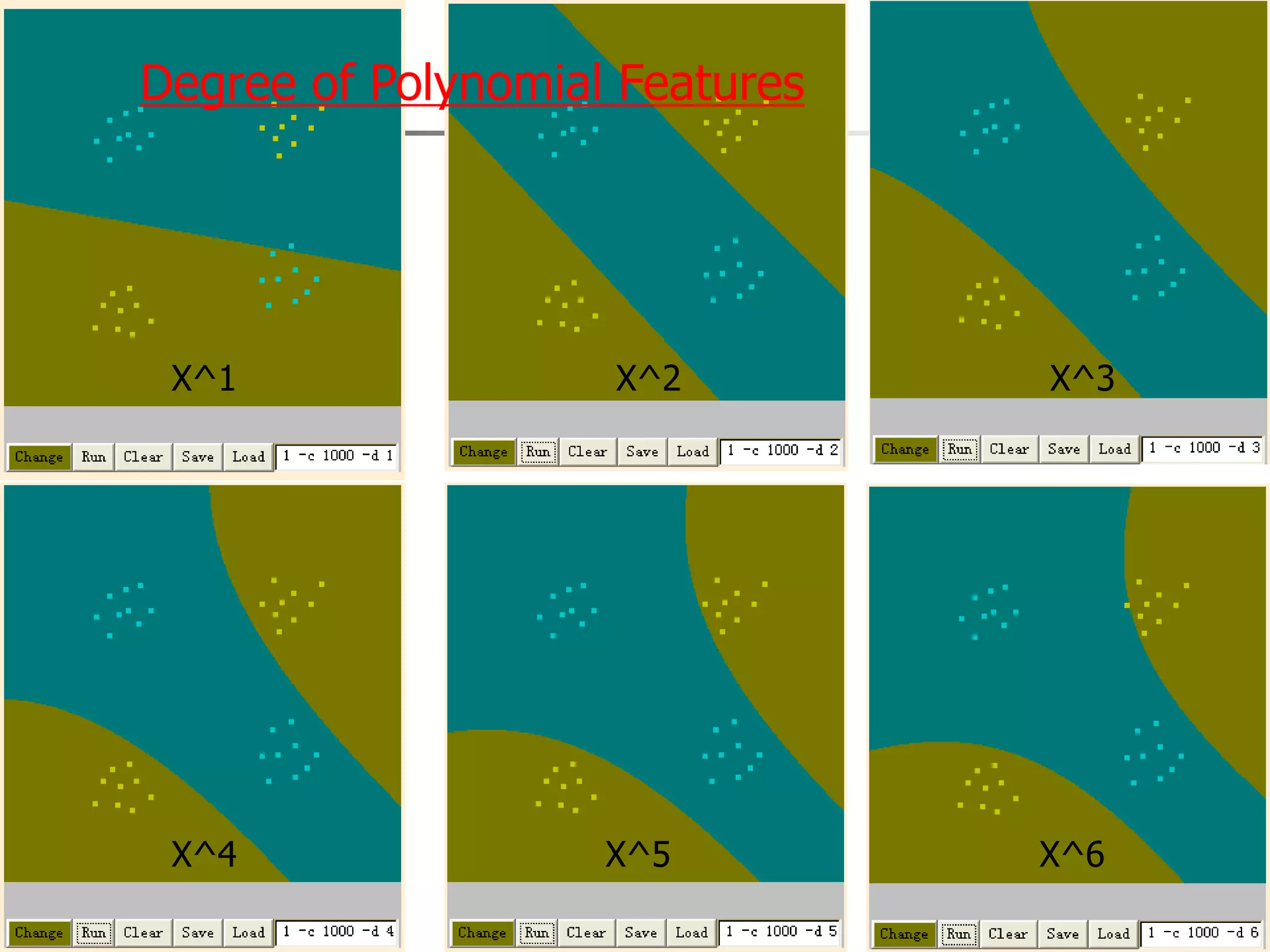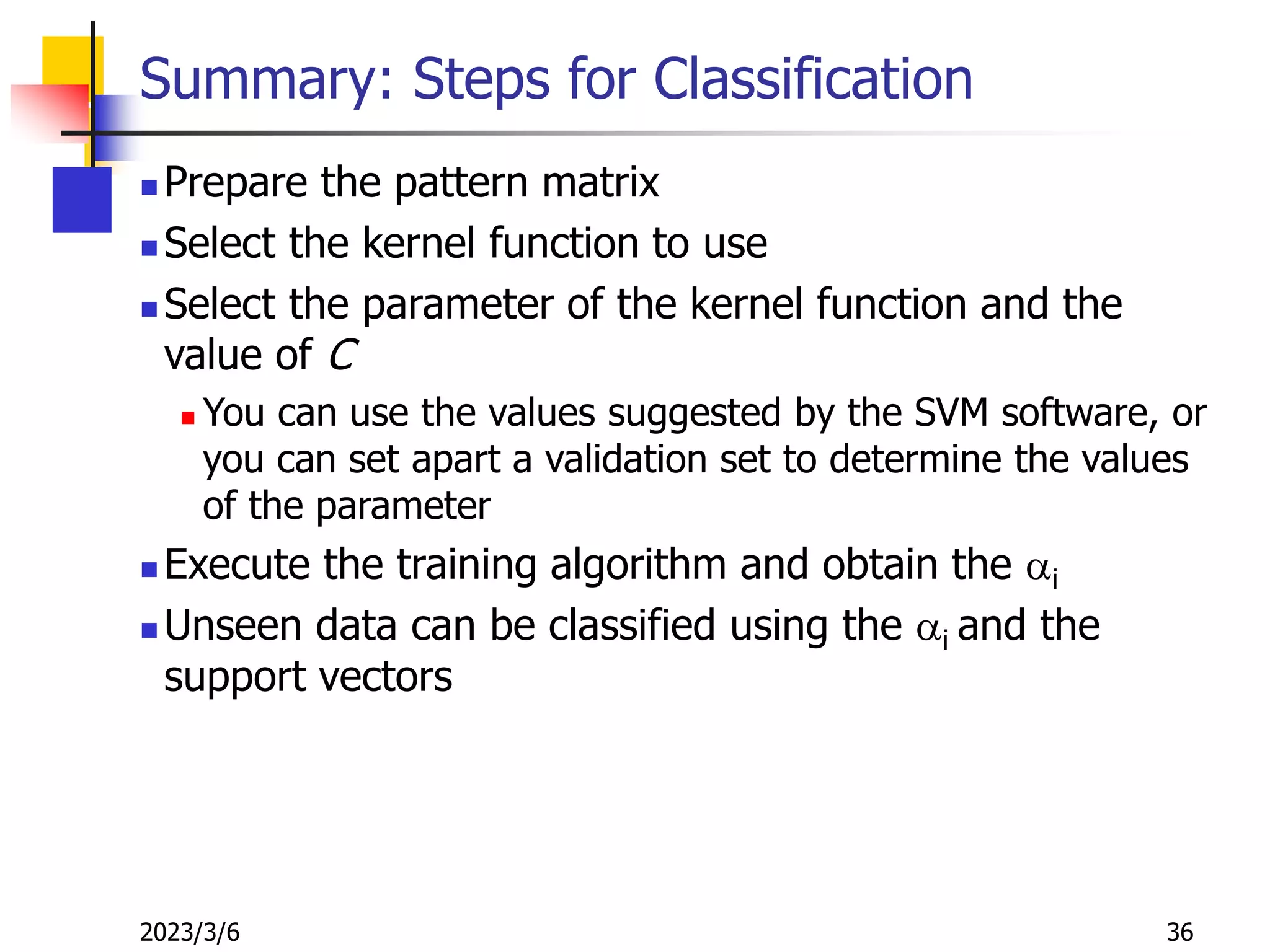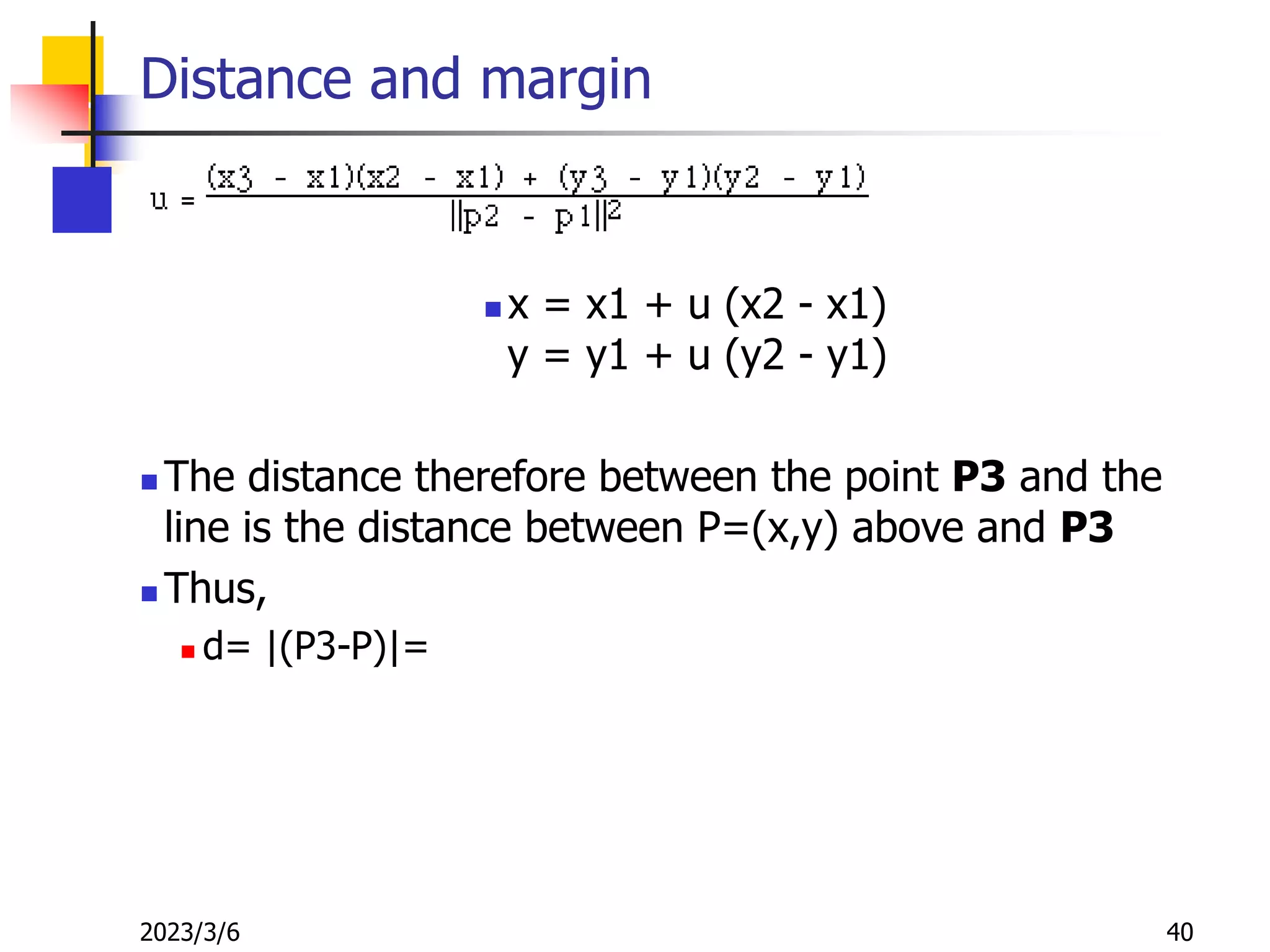This document provides an introduction to support vector machines (SVM). It discusses the history and development of SVM, including its introduction in 1992 and popularity due to success in handwritten digit recognition. The document then covers key concepts of SVM, including linear classifiers, maximum margin classification, soft margins, kernels, and nonlinear decision boundaries. Examples are provided to illustrate SVM classification and parameter selection.
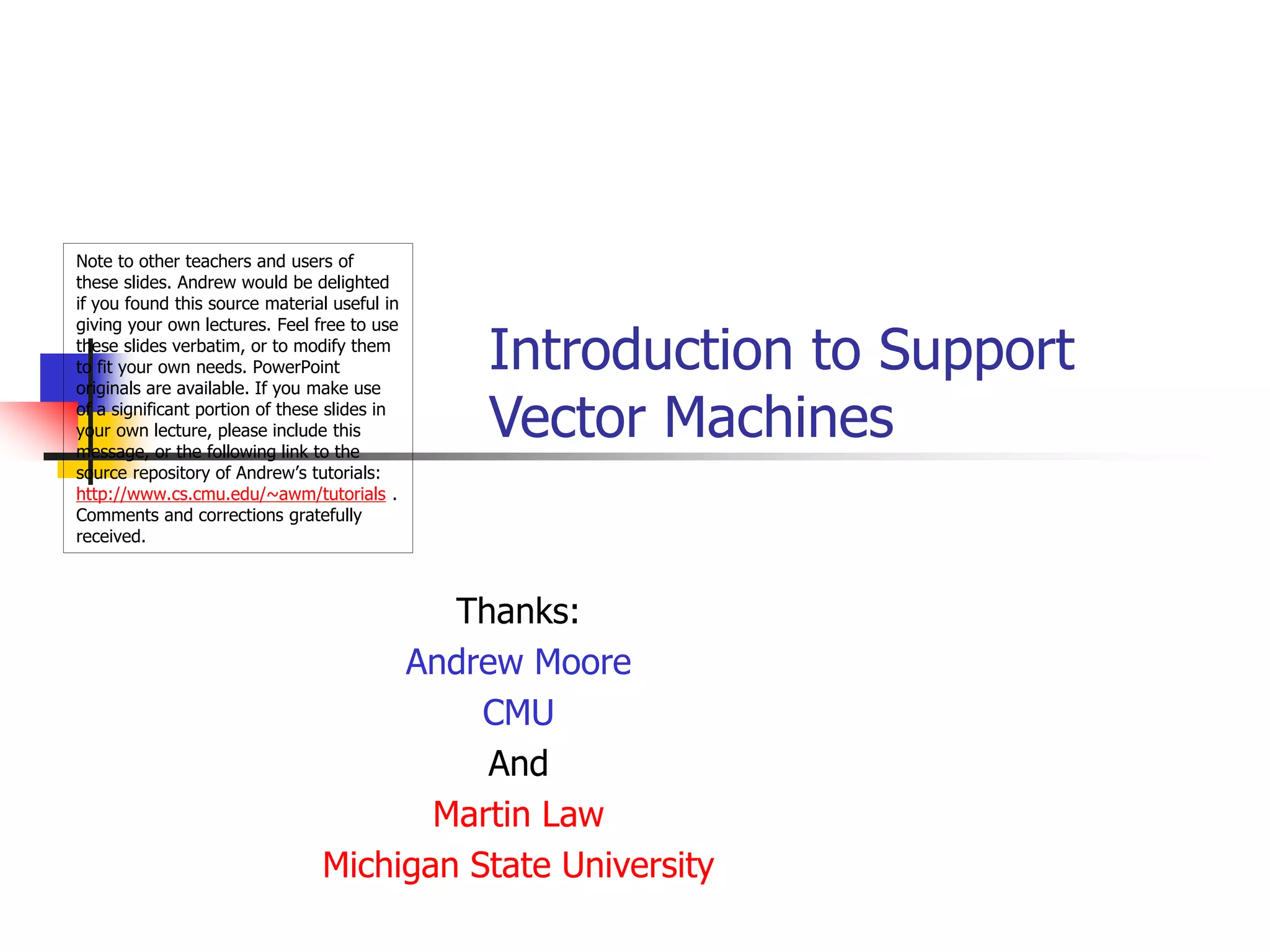
![2023/3/6 2
History of SVM
SVM is related to statistical learning theory [3]
SVM was first introduced in 1992 [1]
SVM becomes popular because of its success in
handwritten digit recognition
1.1% test error rate for SVM. This is the same as the error
rates of a carefully constructed neural network, LeNet 4.
See Section 5.11 in [2] or the discussion in [3] for details
SVM is now regarded as an important example of “kernel
methods”, one of the key area in machine learning
Note: the meaning of “kernel” is different from the “kernel”
function for Parzen windows
[1] B.E. Boser et al. A Training Algorithm for Optimal Margin Classifiers. Proceedings of the Fifth Annual Workshop on
Computational Learning Theory 5 144-152, Pittsburgh, 1992.
[2] L. Bottou et al. Comparison of classifier methods: a case study in handwritten digit recognition. Proceedings of the 12th
IAPR International Conference on Pattern Recognition, vol. 2, pp. 77-82.
[3] V. Vapnik. The Nature of Statistical Learning Theory. 2nd edition, Springer, 1999.](https://image.slidesharecdn.com/svm-230306042418-fe421c17/75/SVM-ppt-2-2048.jpg)

